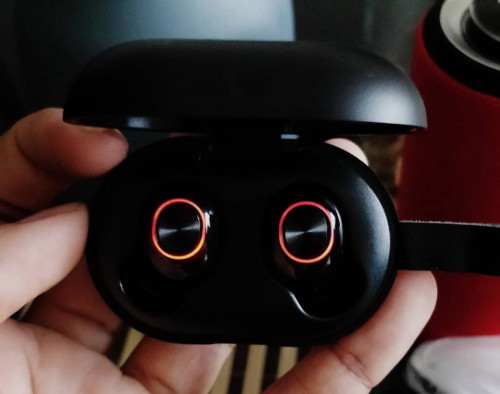Inconvenience breeds innovation, right? When Apple decided to retire their headphone jacks the plethora of wireless earphones/headphones took the market by storm. Everyone started spotting that white earbuds around their ears.
Trendy kan?
But then a new breed of 3rd-party headphones started upping their game by offering cheaper alternative using better tech and lower price point (as much as 3x of an Apple Airpod) by introducing True Wireless earpiece.
But what is 'True Wireless' or TWS as its commonly called?
Wireless and True Wireless headphones are actually different. The important distinction is that “true wireless” headphones completely lack a cable or connector between the earpieces (think wireless charging or Qi Charging cases). “Wireless” headphones are still connected in some way (over-head like Bose, or around the back of the neck (like many sports sets), but no longer need access to a phone jack.
Yea, so what you may ask?
a)CONVENIENCE, duh
b)EASY ACCESS, like how many times you've had to untangle those cords after storing them? even “tangle-free” or fabric-covered corded headphones can at times be difficult to unwind or falls funny after tangling
c)QUICK PAIRING, seamless. Hassle-free. Easy.
Can the wireless earbuds last ALL day long?
When the first cable-free models appeared, among the biggest complaints were poor battery life. Battery life is arguably the weakest spot of all true wireless gadgets even when compared to wireless headphones. Part of the reason for this is because maintaining connectivity between the earbuds as well as with your phone is intensive on the battery of the earbuds.
Another reason is that the smaller form factor makes it difficult to fit in a large battery. So far, the longest estimated battery life available is eight hours. The majority of the “true wireless” models typically available can last between three to five hours.
But inconvenience is the mother of innovation la katakan, many manufacturers managed to find a solution for short battery life – charging cases for “true wireless,” and for the “wireless” models, some manufacturers put an extra battery in the cord..
Almost all “true wireless” headphones comes with a charging case that can charge both earpieces simultaneously. Most of the cases actually carry between two-15 or more extra charges, so you can charge your headphones on-the-go or even charge your mobile phone when it’s running low on power.
So what are your thoughts on TWS earpieces? What has your experience been so far?
![user posted image]()
Trendy kan?
But then a new breed of 3rd-party headphones started upping their game by offering cheaper alternative using better tech and lower price point (as much as 3x of an Apple Airpod) by introducing True Wireless earpiece.
But what is 'True Wireless' or TWS as its commonly called?
Wireless and True Wireless headphones are actually different. The important distinction is that “true wireless” headphones completely lack a cable or connector between the earpieces (think wireless charging or Qi Charging cases). “Wireless” headphones are still connected in some way (over-head like Bose, or around the back of the neck (like many sports sets), but no longer need access to a phone jack.
Yea, so what you may ask?
a)CONVENIENCE, duh
b)EASY ACCESS, like how many times you've had to untangle those cords after storing them? even “tangle-free” or fabric-covered corded headphones can at times be difficult to unwind or falls funny after tangling
c)QUICK PAIRING, seamless. Hassle-free. Easy.
Can the wireless earbuds last ALL day long?
When the first cable-free models appeared, among the biggest complaints were poor battery life. Battery life is arguably the weakest spot of all true wireless gadgets even when compared to wireless headphones. Part of the reason for this is because maintaining connectivity between the earbuds as well as with your phone is intensive on the battery of the earbuds.
Another reason is that the smaller form factor makes it difficult to fit in a large battery. So far, the longest estimated battery life available is eight hours. The majority of the “true wireless” models typically available can last between three to five hours.
But inconvenience is the mother of innovation la katakan, many manufacturers managed to find a solution for short battery life – charging cases for “true wireless,” and for the “wireless” models, some manufacturers put an extra battery in the cord..
Almost all “true wireless” headphones comes with a charging case that can charge both earpieces simultaneously. Most of the cases actually carry between two-15 or more extra charges, so you can charge your headphones on-the-go or even charge your mobile phone when it’s running low on power.
So what are your thoughts on TWS earpieces? What has your experience been so far?
